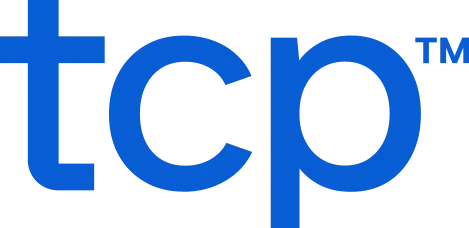Healthcare organizations lose millions every year to preventable scheduling errors. Overtime costs climb, compliance slips through the cracks, and staff burnout accelerates — all because scheduling is treated as an afterthought instead of a core part of patient care.
The reality is simple: behind every smooth patient interaction is a schedule that works. Behind every missed break, compliance violation, or overtime spike is one that doesn’t. Schedules set the tone for how your teams perform, how patients experience care, and how well your organization controls costs.
Poor scheduling isn’t just a paperwork problem. It creates ripple effects that stretch far beyond filling shifts. Staff performance suffers, compliance risks grow, and financial pressure mounts. Over time, the cracks in scheduling become cracks in your organization’s foundation.
This article breaks down the ripple effects of poor scheduling and why every healthcare leader should take a closer look.
How scheduling errors in healthcare impact staff performance
A healthcare schedule is the framework that tells nurses, technicians, and physicians when to show up, how long they’ll work, and who they’ll be working alongside.
If that framework is weak, the entire patient experience suffers. Staff performance is the first and most visible casualty.
When scheduling errors in healthcare go unchecked, workloads pile unevenly. One team runs on fumes while another is underutilized. Over time, stress and inconsistency eat away at morale. In healthcare, your patients’ lives depend on staff being alert and collaborative, so poor scheduling compounds into serious risks.
Burnout and turnover
In small practices, a single absence can throw the whole day into chaos. If one medical assistant calls out, everyone else picks up the slack. Over weeks or months, this leads to exhaustion, resentment, and eventually turnover.
In mid-sized clinics or hospitals, the problem is more complex. Multiple shifts, rotations, and specialized roles make it easy for inequities to go unnoticed. A night shift may carry heavier workloads without proper relief, spreading burnout across departments.
In large enterprises, administrators may formally track burnout through HR surveys or dashboards. But while they’re busy analyzing data, frontline staff may already be stretched too thin — the lag between recognition and action makes turnover more likely and hurts staff retention.
Replacing trained nurses or technicians costs you at your bottom line, your continuity, and your team’s trust.
Patient care quality
Patient care relies on the right people with the right skills present at the right time. When schedules are slapped together without attention to skill mix, patients pay the price.
Consider a scenario in a surgical ward: two less-experienced nurses are scheduled for the same overnight shift without a more seasoned RN to oversee, leading to:
- Delayed care
- Errors in medication administration
- Longer wait times
These small cracks in staffing quickly turn into patient dissatisfaction .
Operations directors and scheduling managers know these mistakes don’t always appear on the budget sheet immediately. But they do surface in online reviews, compliance reports, and even legal claims. Patient care quality is inseparable from scheduling quality.
Team collaboration
Healthcare is a team sport. Doctors rely on nurses, nurses rely on aides, and everyone depends on communication. Poor scheduling can scatter teams, breaking up established workflows.
For example, take a clinic that rotates staff without regard for how teams function best. Hand-offs between shifts suffer, leading to duplicated efforts (or worse, care gaps), all because of miscommunication. For standard patient care, it’s an inconvenience — in an emergency department, it’s life-threatening. The most collaborative teams havepredictable shifts with colleagues they trust. But when schedules are inconsistent, so is the team. Over time, it erodes efficiency and drives frustration that no amount of training can fix.
How scheduling errors in healthcare threatens compliance
Compliance might feel like another stack of paperwork in healthcare. While that may be true, it’s also the guardrail that protects patients, keeps staff safe, and shields your organization from costly penalties.
Scheduling that ignores compliance issloppy at best and dangerous at worst.
Managing licensure and credential requirements
Imagine building a schedule only to realize mid-shift that one of your nurses has an expired license. The risk isn’t abstract: allowing that nurse to practice exposes the hospital to legal consequences, fines, and patient safety issues.
This oversight often comes from relying on memory or manual employee scheduling for small organizations. In mid-sized hospitals, credentials may be tracked in HR systems but not integrated into scheduling tools, creating gaps. The complexity multiplies in large, multi-state enterprises — each location may follow different renewal timelines and requirements.
Failing to align credentials with scheduling creates an avoidable compliance crisis. Staff are put in impossible situations, administrators scramble, and patients risk receiving care from underqualified providers.
Staying ahead of labor laws and union agreements
Labor laws and union agreements set strict parameters around hours, breaks, and overtime pay. These rules shift depending on state, department, or contract.
When schedules don’t account for these details, violations pile up. A nurse might work too many consecutive hours without the required rest, or a technician may be scheduled outside of their union’s approved rotation. You’re not only asking for internal frustration, but legal penalties, grievances, and reputational damage.
In SMBs, where administrators may wear multiple hats, these mistakes often gounnoticed until a complaint arises. Mid-market organizations may recognize violations but lack the real-time visibility to prevent them. Enterprises usually have oversight systems, but the complexity of managing multiple jurisdictions means slip-ups are still common.
Automating compliance checks
Manual compliance checks are slow and prone to error. In small practices, managers may rely on their personal knowledge of staff certifications and laws. That works until someone leaves, or the regulations change.
In mid-sized organizations, policies exist but may not be consistently applied. A scheduling manager may know the rules but lack integration with the actual scheduling tool. Enterprises face even steeper challenges, balancing federal, state, and contractual requirements across multiple locations.
Automated compliance checks remove the guesswork by catching credential expirations, overtime violations, and labor law compliance risks before they reach the floor. Instead of reacting to compliance failures, healthcare leaders can prevent them altogether.
The financial drain of scheduling errors in healthcare
Every slot on your schedule represents a financial decision. Staffing too heavily wastes dollars. Staffing too lightly risks revenue, reputation, and patient satisfaction.
Poor scheduling quietly erodes margins in three main ways: overtime, demand mismatches, and admin.
Controlling overtime before it snowballs
Overtime is one of the most significant hidden costs in healthcare. It rarely comes as a single considerable expense. Instead, it creeps in through small overages that add up.
In small practices, overtime spikes when one person covers multiple absences. Without early alerts, the administrator may not even realize the problem until payroll closes.
In mid-market hospitals, overtime data is usually available, but it may not surface until the end of a pay period. By then, budget damage is already done.
Enterprises often have the visibility but not the agility. Approvals may take days, and costs are locked in by the time the schedule is adjusted. Each extra hour chips away at margins and draws scrutiny from finance leaders.
Matching staffing to patient volume
Scheduling is a balancing act between supply and demand:
- Too many staff on the floor= budget is wasted
- Too few staff = longer wait times, lower quality care, dissatisfaction
In healthcare, the stakes of understaffing are higher than in retail or hospitality. But overstaffing, while safer, still eats away at limited resources.
Operations leaders and HR managers need tools to align staffing with patient volumes. Whether it’s flu season in a clinic or peak admissions in a hospital, schedules that ignore demand patterns create unnecessary financial strain.
Administrative scheduling costs
Scheduling itself carries costs like a separate job.
In SMBs, the person creating the schedule often juggles multiple roles from HR to payroll and office management. Every hour spent wrangling spreadsheets is an hour not spent supporting patients.
In mid-sized organizations, administrators may dedicate significant time to building schedules. This results in slower responses to changes, like last-minute absences or surges in patient demand.
Enterprises may have teams focused solely on scheduling, but the volume of manual work still drives labor costs higher. Each adjustment eats into administrative hours and diverts attention from strategic initiatives.
Over time, the inefficiency becomes a quiet but costly drain.
Turning healthcare scheduling errors into a strategic advantage
Now imagine it’s a Thursday afternoon.
Instead of scrambling to patch holes, the administrator opens a centralized scheduling system. Credentials are verified automatically, overtime alerts are already flagged, and real-time communication helps staff swap shifts quickly. Instead of being a liability, scheduling is a strategic asset.
Best practices for proactive scheduling include:
- Centralized access and real-time updates – Everyone sees the same schedule, reducing confusion.
- Automated credential checks – Expired licenses or training gaps are flagged before they cause compliance issues.
- Overtime and coverage alerts – Small overages are addressed before they spiral into budget hits.
- Flexible staffing models tied to demand forecasts – Teams scale up or down as patient volumes shift, without leaving gaps.
When scheduling works this way, administrators spend less time firefighting and more time focusing on patient outcomes. Staff feel supported, compliance risks drop, and financial surprises are minimized.
How to start fixing scheduling errors in healthcare
Before you jump into new solutions or rewriting policies, you need to understand where the cracks already exist.
These cracks don’t always look dramatic at first. They show up in minor frustrations, repeated overtime, or subtle morale dips that spread across departments. Over time, what feels like “just the way things are” becomes a drain on patient care and financial stability.
| Where scheduling errors in healthcare show up first | ||
| SMBs | Mid-market | Enterprise |
| Constant last-minute calls Reliance on one or two staff members to fill in the blanks | Recurring compliance violations Managers spending hours weekly to adjust schedules for union rules | Poor coordination across multiple facilities, creating negative scheduling domino effects Excessive overtime costs and manual work significantly draining margins |
Taking a closer look at your current scheduling process is less about blame and more about clarity.
Here are a few questions that help reveal where cracks are forming:
- Are compliance checks handled without endless manual review?
- Do your teams believe schedules are fair and balanced?
- Are labor costs predictable month over month?
- Does your retention data show stability or red flags?
If you can’t answer “yes” to most of these questions, scheduling may be holding your healthcare clinic or office back. And it may be time to explore healthcare scheduling software designed for fast-paced, patient-centric care.
Turn scheduling improvements into patient and staff ROI
Controlling your schedule is controlling the ripple effects it can have across your healthcare organization. Here are the outcomes to expect when scheduling improves:
- Predictable costs – Overtime is tracked and controlled before it hits payroll
- Stronger compliance posture – Licenses, credentials, and labor laws are aligned with every shift
- Engaged staff and better care quality – Teams that aren’t overworked deliver safer, more reliable care
For healthcare leaders, the schedule is one of the most powerful levers for operational performance. By taking a fresh look at how scheduling works for your healthcare organization, you can identify gaps, reduce unnecessary overtime, and avoid compliance risk.
With the right solution, scheduling can transform from a daily struggle into a strategic advantage. More time and energy can be spent on patient care, not calendar firefighting.
TCP Software’s employee scheduling and time and attendance solutions have the flexibility and scalability to suit your organization and employees as you grow.
From TimeClock Plus, which automates even the most complex payroll calculations and leave management requests, to Humanity Schedule for dynamic employee scheduling that saves you time and money, we have everything you need to meet your organization’s needs, no matter how unique.
Plus, with Aladtec, we offer 24/7 public safety scheduling solutions for your hometown heroes.
Ready to learn how TCP Software takes the pain out of employee scheduling and time tracking? Speak with an expert today.
What to read next
Explore all resources



